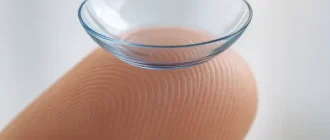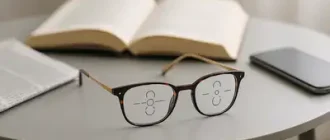When it comes to buying contact lenses, a growing number of people are opting to bypass their optometrist entirely. In the age of one-click convenience, many find it easier (and cheaper) to buy contact lenses without a prescription. But what are the real implications of this trend? From public health concerns to legal grey areas, this article dives deep into the risks, the motivations, and the industry trends that have brought us here.
The Rise of Prescription-Free Contact Lens Purchases
In 2024, over 16 million Americans wore contact lenses, according to a survey by the Centers for Disease Control and Prevention (CDC). A shocking 30% of these users admitted to buying their lenses without a valid prescription at least once in their lifetime. Why? The reasons range from convenience and affordability to pure lack of awareness.
Online shopping has made it incredibly easy to get contact lenses without jumping through the hoops of regular eye exams. Websites offering lenses at a discounted price, no prescription required, often lure consumers with the promise of quick and hassle-free transactions. This trend, however, isn’t without significant risks.
The Risks: It’s More Than Meets the Eye
Contact lenses are medical devices. Placing a lens directly on your cornea without a professional fitting can lead to serious health complications. Eye infections, corneal ulcers, and even permanent vision loss are all very real consequences of improper contact lens use.
Dr. Emily Rivera, an optometrist from Chicago, points out, “I’ve seen patients come in with corneal abrasions because they ordered contact lenses online without understanding what base curve or diameter meant. They just guessed and ended up with lenses that didn’t fit properly.” The cornea, after all, is a delicate structure, and slight variations in fit can lead to abrasions, poor oxygen permeability, and chronic irritation.
A Closer Look: The Real Cost of Saving Time and Money
One of the most cited reasons for buying lenses without a prescription is cost. On average, contact lens users spend between $250 to $500 per year on lenses and related supplies. Discount websites often promise savings up to 40%, which can be tempting, especially for students or young professionals.
But these upfront savings might lead to bigger expenses down the line. Treating an eye infection can cost anywhere from $50 to $1,000 depending on its severity. Dr. Kevin Patel, an ophthalmologist from New York, adds, “One of my patients tried saving money by ordering non-prescription contacts. He ended up with a serious corneal infection and ultimately needed a $3,000 surgery to save his vision.” In short, those initial savings might not be worth the cost.
Trends in Regulation: A Global Perspective
While the United States and Canada strictly regulate contact lens sales, requiring valid prescriptions, other countries are not as stringent. For instance, in Japan, contact lenses can often be purchased at convenience stores without a prescription. In Germany, laws also allow for lenient sales if the customer claims they know their prescription.
Health Situations and Common Problems
A common scenario is keratitis, an inflammation of the cornea, often caused by improper contact lens hygiene or ill-fitting lenses. Keratitis cases are on the rise, with one in 500 contact lens users suffering from this condition annually in the United States. It can lead to severe pain, redness, and blurry vision.
Another significant issue is hypoxia. Contact lenses restrict the amount of oxygen that reaches the cornea, and wearing lenses that don’t fit properly or leaving them in too long can exacerbate this problem. Oxygen starvation can lead to blood vessels growing into the cornea, a condition known as neovascularization, which can threaten vision if untreated.
Why Are People Ignoring the Risks?
So, why are people knowingly risking their eye health? A survey conducted in early 2024 found that 45% of respondents felt that the cost of regular eye exams was too high, while 35% cited the inconvenience of scheduling an appointment. Many believe that since they’ve been wearing lenses for years, their prescription hasn’t changed and an exam isn’t necessary.
Cultural influences also play a role. In a society that increasingly values speed and convenience, the idea of waiting a week for an appointment, then another week for a valid prescription, seems archaic. Many consumers view their prescription as a mere formality—something that’s getting in the way of their immediate needs.
The Industry Response
The contact lens industry is at a crossroads. Companies like Warby Parker and 1-800 Contacts are leaning into telehealth solutions, allowing customers to renew their contact lens prescriptions online via a virtual eye test. While this technology can be a boon for convenience, it’s worth noting that it doesn’t replace a comprehensive eye health check.
Dr. Rivera warns, “An online test might measure visual acuity, but it can’t identify issues like glaucoma or early signs of cataracts. Relying solely on telehealth for eye care can lead to undiagnosed, progressive problems.”
Our Editorial Takeaway: Play It Safe
We understand the temptation to save time and money by bypassing your optometrist. But your eyes are irreplaceable. The short-term gain of saving a few dollars pales in comparison to the long-term risk of permanent damage. If cost is a concern, consider budget-friendly clinics or look for local eye health initiatives that may offer discounted exams. The real value lies in ensuring your eyes are healthy and your lenses are fitted properly—something no discount website can guarantee.
If you’re buying contact lenses, do it right. It’s a small price to pay for your vision.





